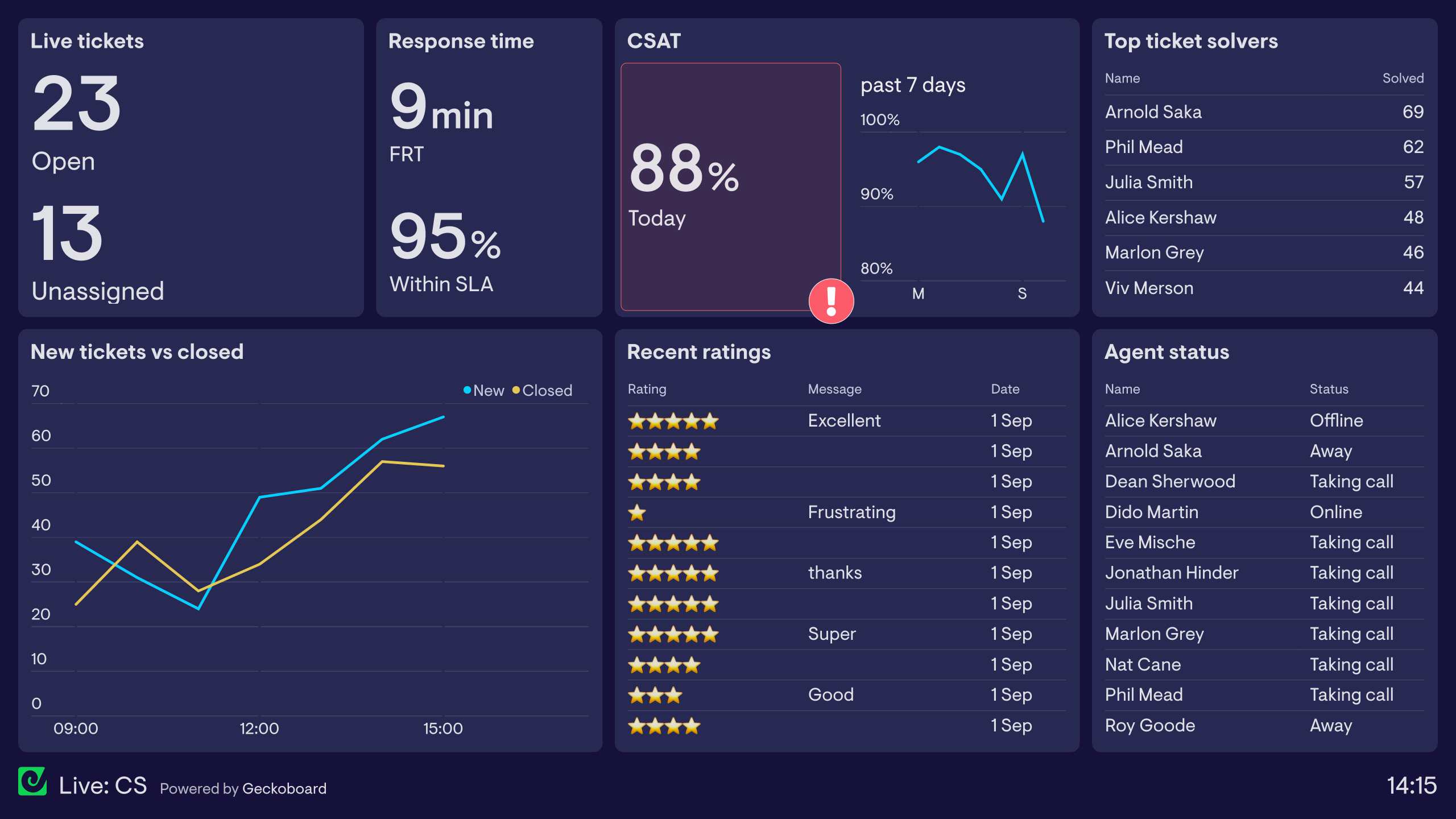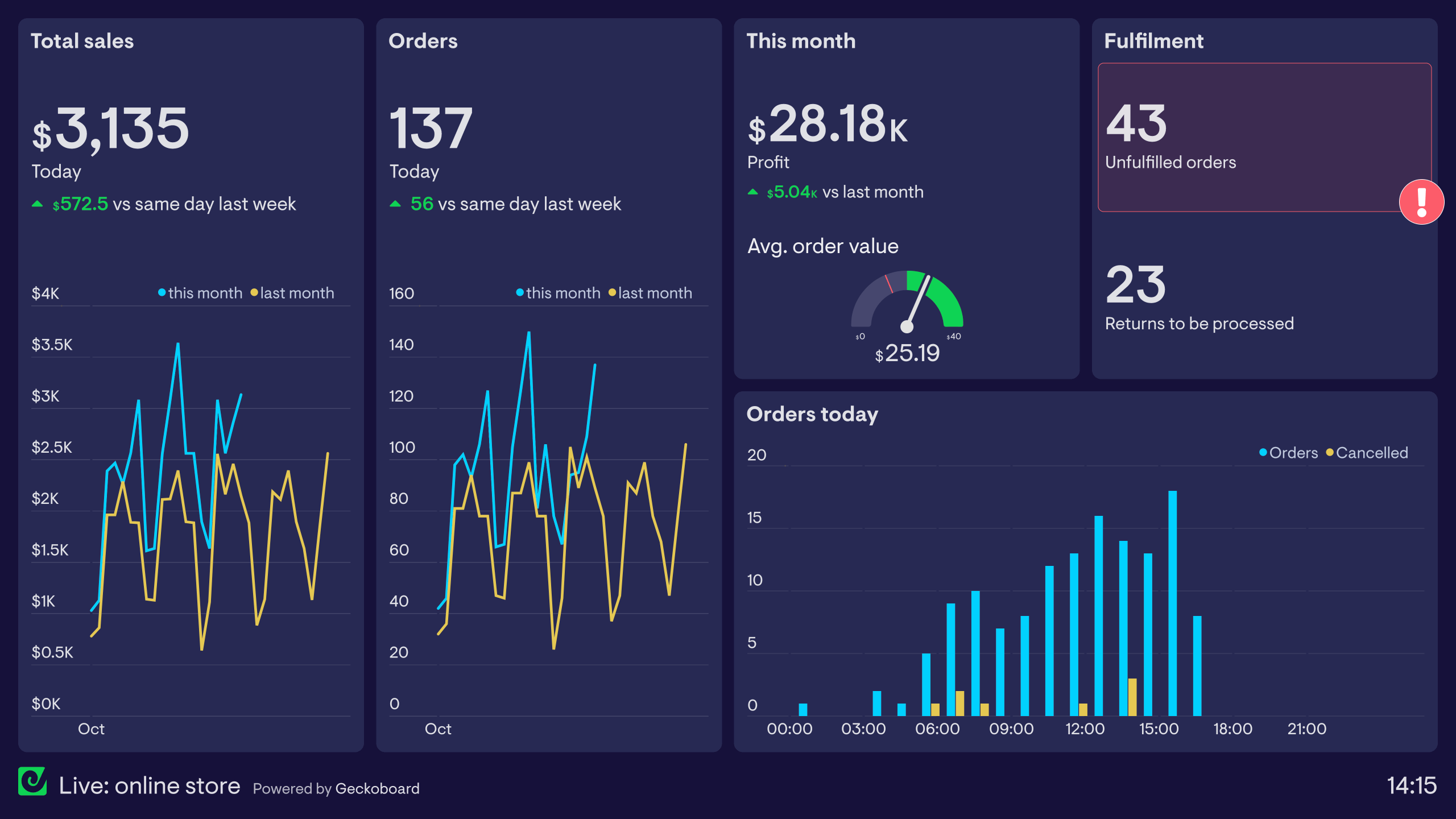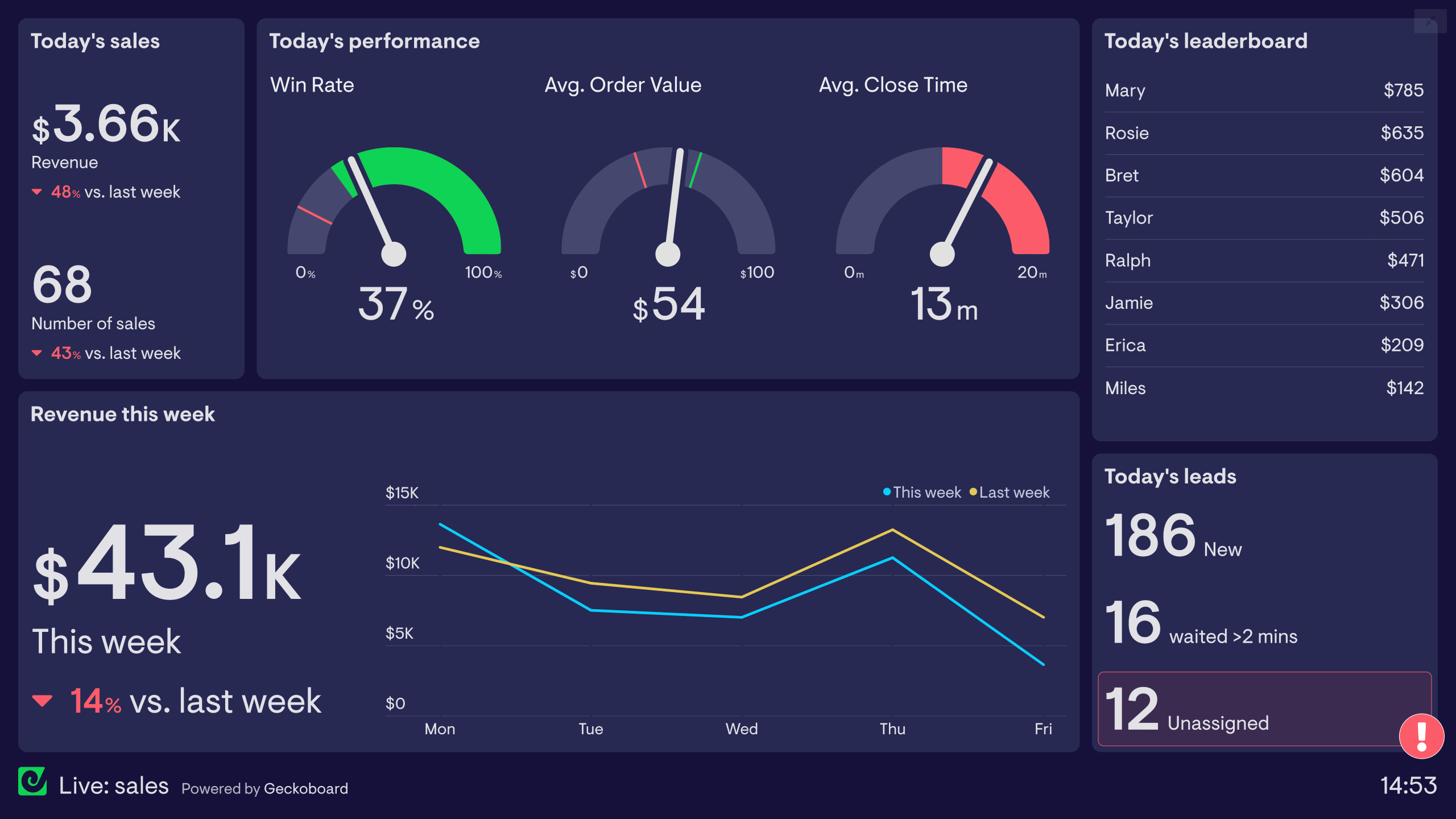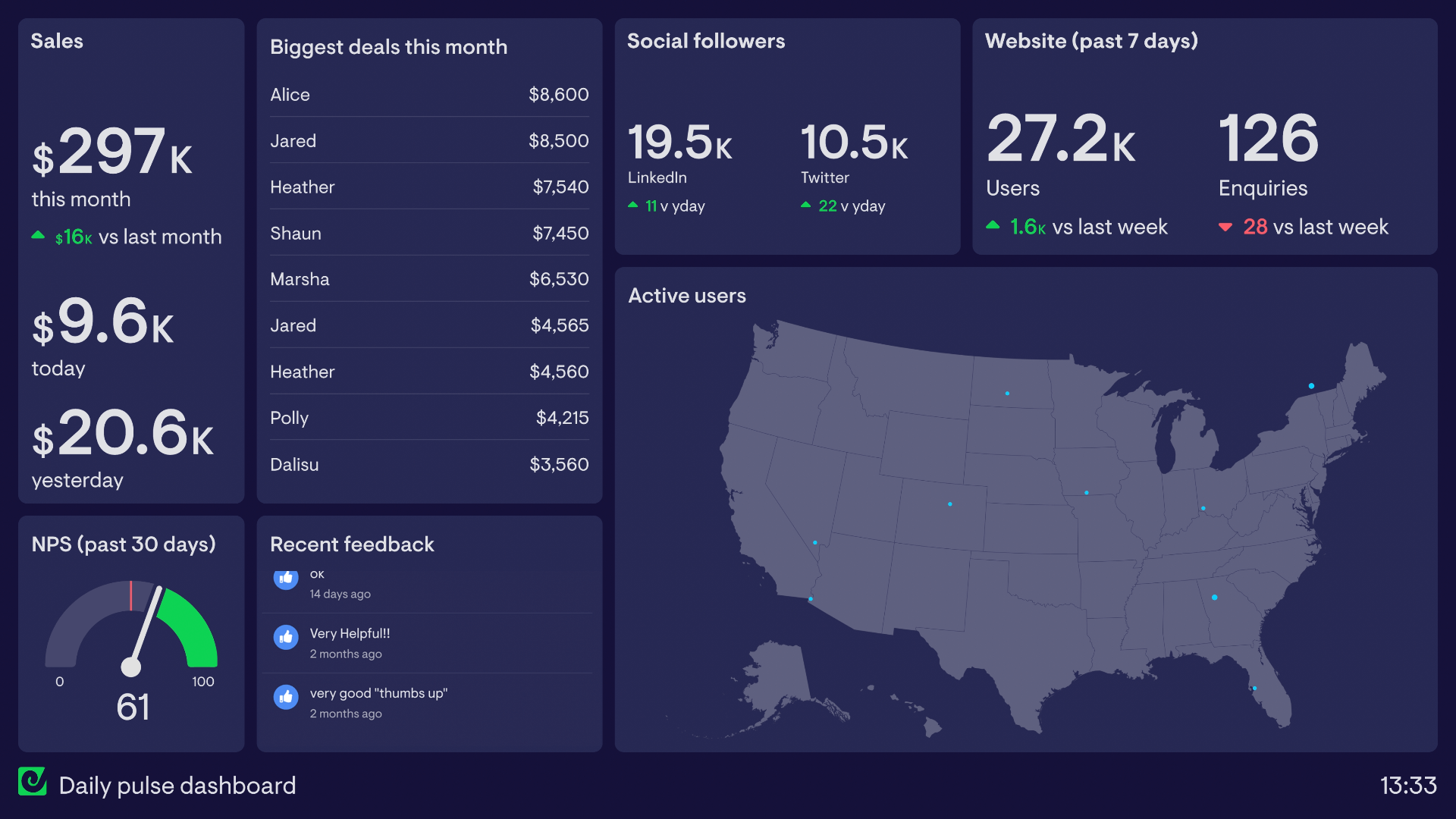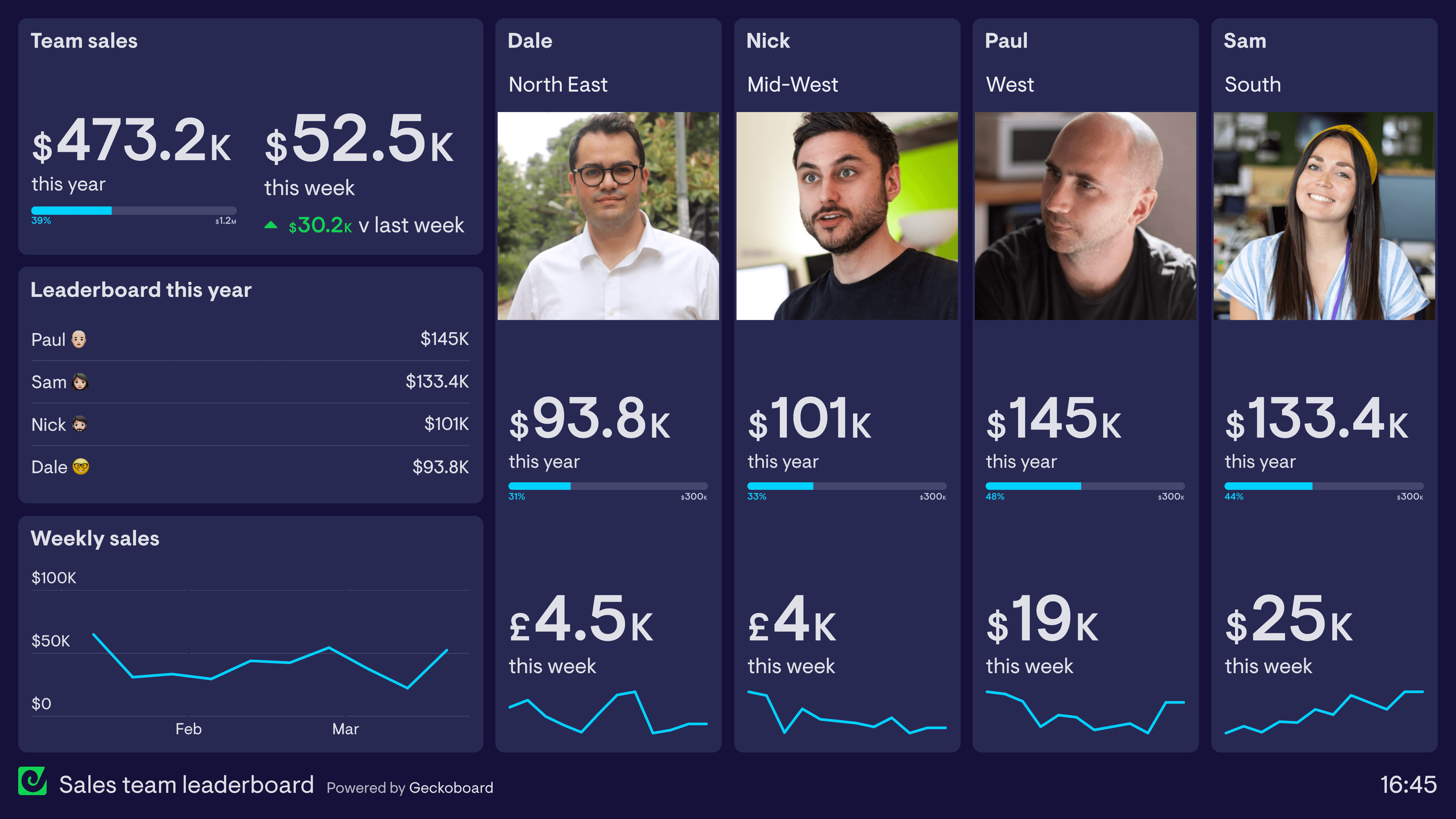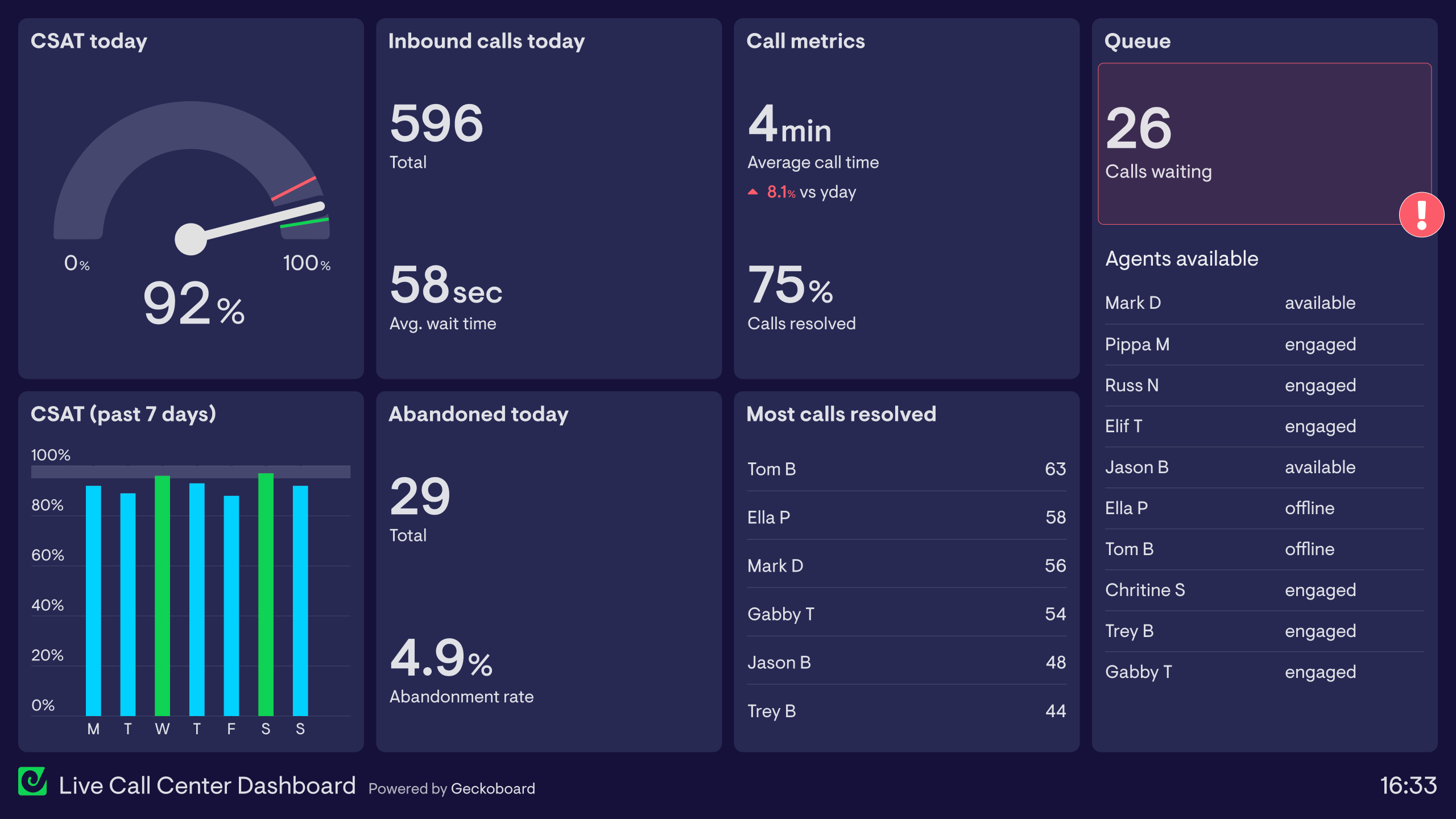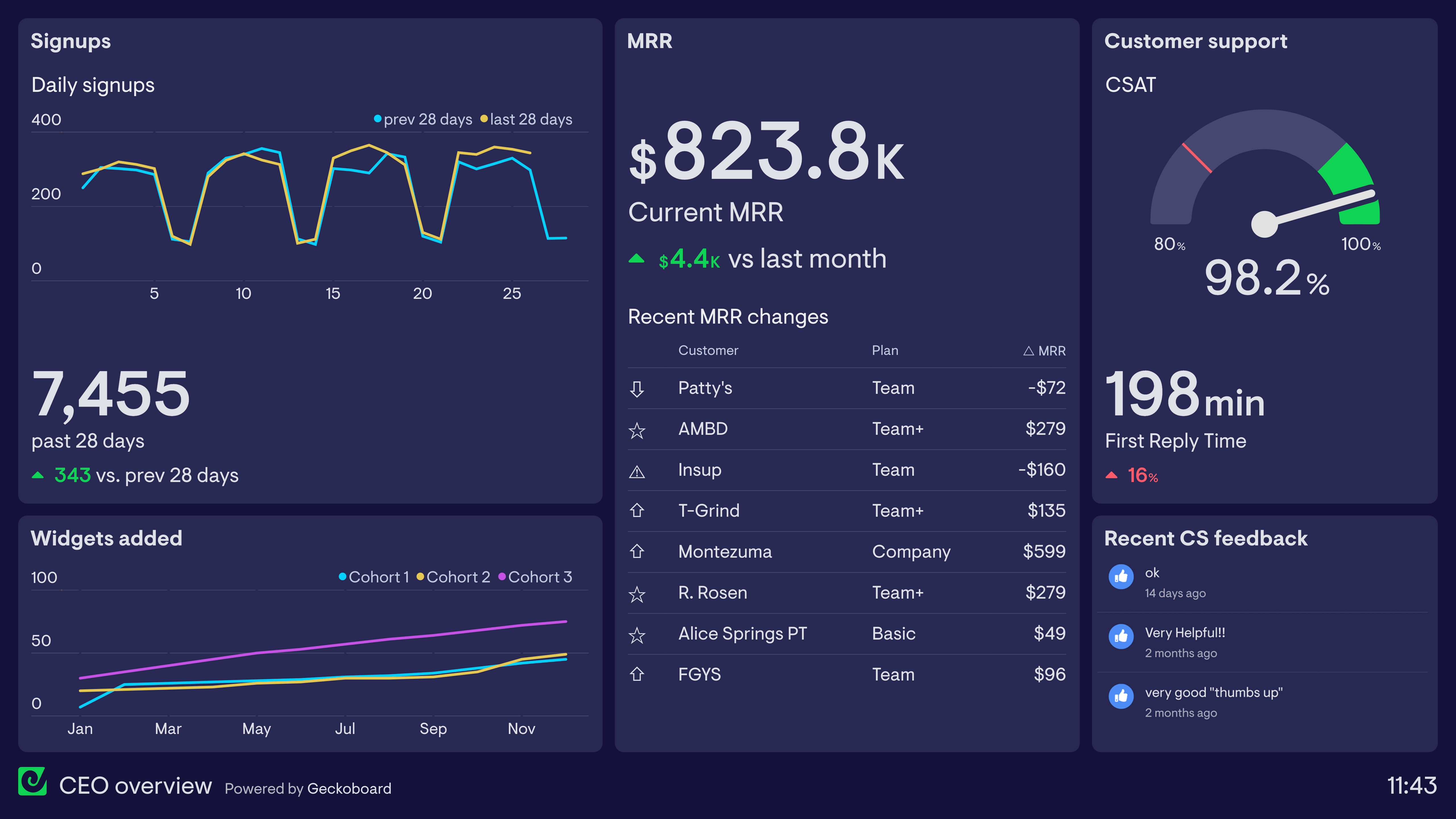What is a live dashboard?
A live dashboard displays metrics and data visualizations in real-time. This enables teams and decision makers to react to changes in status and performance as quickly as possible.
Live KPI dashboards are particularly useful in situations where important metrics are otherwise difficult to access, or when the team’s attention is focused on more immediate tasks. For example, many call centers display live dashboards on a TV on the wall. This allows the team to immediately see when something has changed (such as a build up of callers) and respond. Without a live dashboard, it would be impractical to access this information.
A live dashboard can surface metrics from multiple data sources, and display them side by side. This presents the opportunity to visualize only the most important metrics, necessary for managing a specific system or process.
Because live dashboards are usually used to support a specific task or process, the design of the dashboard is especially important. Unlike an interactive dashboard (which is impractical to work with when focused on other tasks), a live dashboard needs to be able to be understood quickly and at-a-glance.
Examples of live dashboards
Customer Support
This dashboard surfaces live data from a Customer Support platform, such as Zendesk. The focus is on metrics, which the team needs to access and understand in the moment.
For example, in the top left hand corner, the team can see how many tickets are open and specifically how many are yet to be assigned. A sudden influx of tickets is potentially something that will result in a longer response time, causing a poor experience for their customers.
The dashboard also monitors the First Response Time (the average length of time each customer is waiting for a response) and how many have been answered within a set limit (Service Level Agreement).
In the bottom left corner, the dashboard shows how many tickets are being opened and closed throughout the day. This helps the team to know if they are keeping on top of tickets and resolving them efficiently. It also helps the team to become more generally aware of how demand increases and decreases throughout the day, so they can better allocate resources in the future.
In the middle third, the dashboard is monitoring Customer Satisfaction scores including an overall score and the most recent ratings. The overall score has dropped below an acceptable level and has triggered a red status indicator. Status indicators like these make important changes even more visible for the team.
On the right, we can see the status of each agent, as well as a leaderboard showing who has solved the most tickets today. Live dashboards like these provide a fun, competitive element to work culture.
Focus area
Live Support KPIs
Who looks at it?
Customer Support team
How often?
Continuously
- Zendesk SupportFreshdeskRingCentralSQL Database
Online store
This dashboard is used by an online store. It visualizes metrics related to different operational stages, including revenue, orders and fulfillment. As a result, it helps different members of the team, from marketing to operations to stay on the same page. This is especially important during busy periods such as Black Friday and the Holiday Season where systems and processes can become strained and confused due to high demand.
On the left, the dashboard is visualizing live ecommerce data from Shopify. We can see how the store is performing overall, including how much revenue has been generated today, and how many orders have been placed. If something were to go wrong in the store, which prevented customers from placing orders, the team would be able to see this quickly and investigate.
On the right, the dashboard is visualizing fulfillment KPIs which are relevant to the warehouse team. Here the team can see if they are keeping up with demand or if there is any kind of backlog.
Focus area
Ecommerce KPIs
Who looks at it?
Marketing Manager, Fulfilment Manager, Store Owner
How often?
Several times a day
- ShopifySQL DatabaseMixpanelZapier
Sales
This dashboard is used by a Sales team who are processing a high volume of inbound leads. It helps them stay on top of their key performance indicators in their fast-paced work environment.
In the top left corner, the dashboard is visualizing the most important metrics for the team – revenue generated today, and number of closed sales. Next to this on the right, the dashboard is qualifying this success with some health metrics – win rate, average order value and average close time.
Below this, the dashboard is contextualizing today’s sales performance by showing how it compares to this and the previous week.
On the right, we also have a leaderboard, which helps to encourage friendly competition between sales reps.
Focus area
Sales KPIs
Who looks at it?
Sales team, Sales Manager
How often
Several times a day
- SalesforceHubSpotSQL DatabaseSpreadsheets
